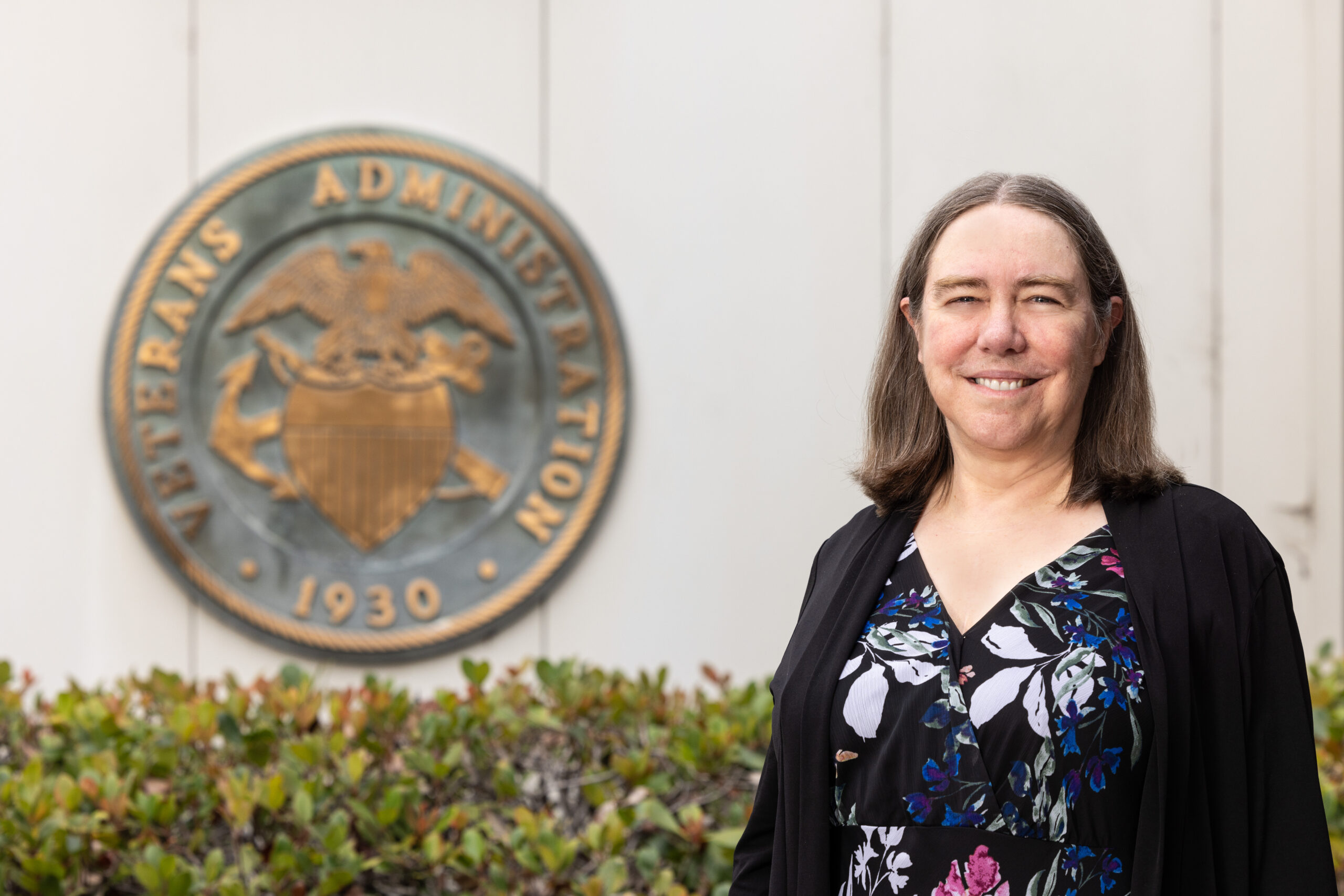
Transforming Women Veterans’ Health Care: Susan Frayne’s Leadership in Advancing VA Initiatives
#Interventions
Susan Frayne, MD, a pioneer in women’s health at the VA, stands at the forefront of expanding research and clinical care to better serve the rapidly growing population of women veterans.
When Susan Frayne, MD, began her career in the early 1990s, Veterans Affairs (VA) medical services were almost entirely geared toward men.
“If a woman did show up in the clinic,” Frayne recalls, “it would take a half hour to locate a speculum to do a pelvic exam.”
Back then, VA clinicians saw very few women patients and were often rusty on how to care for them, says Frayne, who is now the director of the VA Health Systems Research Center for Innovation to Implementation (Ci2i) and a Stanford Medicine professor in the Division of Primary Care and Population Health.
As part of its mission, faculty in the Division of Primary Care and Population Health are committed to service at the VA. To that end, Frayne divides her time between VA activities and service at Stanford University.
Women have served in the U.S. military since the American Revolution, but it wasn’t until 1948 that Congress granted them entitlement to veterans benefits and not until 2015 that they were approved to serve in combat roles. Despite their long history of service, women have been an extreme numeric minority within the VA system, leading to historical gaps in addressing their healthcare needs.
Today women represent the fastest-growing population in the VA, comprising 10% of VA patients. This has heightened the need for a stronger evidence base to systematically enhance care at the bedside.
“Women veterans have been in the VA for a long time but used to receive less attention due to their small numbers. It is heartening to now be seeing how VA has been making it a priority to ensure that their healthcare needs receive the focus they deserve,” Frayne says.
Supported by the efforts of Frayne and her colleagues to advance the boundaries of women’s health research and care, the VA has implemented several key initiatives to advance clinical research and advocate for women veterans.
Prominent among these is the Women’s Health Research Network, which has accelerated the scope and impact of VA health research since Frayne and two colleagues at VA Greater Los Angeles and the University of California, Los Angeles – Elizabeth Yano, PhD, and Alison Hamilton, PhD – founded it in 2010. Its Women’s Health Practice-Based Research Network (WH-PBRN) component, which Frayne leads, connects 76 VA medical centers across the country – together representing over half of the women veterans served by the federal agency – and provides a national platform for multisite studies. While the number of women veterans at any one VA campus is still typically too low to supply enough study participants to yield meaningful conclusions, recruiting from multiple WH-PBRN member sites ensures better representation.
To date, over 100 multisite studies have been conducted through the WH-PBRN. These cover a wide range of high-priority areas such as mental health and suicide, pain and opioids, reproductive health, military sexual trauma, access to women’s health primary care providers, rural health care, and more. Responding to the aging of the women veterans population, the WH-PBRN has been supporting studies on conditions like heart disease and menopause.
The WH-PBRN also brings research to diverse patient populations and healthcare settings. “We’re able to reach populations that often tend to be underrepresented in research,” Frayne explains. “The WH-PBRN stretches all the way from Samoa to Puerto Rico and Alaska, and from big cities like New York, Houston, and San Francisco to facilities that serve largely rural populations like Fresno and Iowa City.”
“We are working to ensure that women veterans are better represented in clinical research, which is crucial for developing effective treatments and interventions tailored to their unique needs.”
– Susan Frayne, MD
Findings from research conducted in a predominantly male patient population cannot reliably be used to guide the care of female veterans. As a spin-off of the Women’s Health Research Network, another initiative, the Women’s Enhanced Recruitment Process, is designed to improve the equitable representation of women in clinical trials. Led by Frayne and Karen Goldstein, MD, at VA Durham and Duke University, this program addresses the historical underrepresentation of women veterans in research to increase the inclusiveness of large VA trials.
“We are working to ensure that women veterans are better represented in clinical research, which is crucial for developing effective treatments and interventions tailored to their unique needs,” Frayne says.
To further support these efforts, the Women’s Health Evaluation Initiative (WHEI) leverages VA databases to inform national VA strategic planning and policy development. WHEI’s data-driven approach helps identify gaps in current research and care, guiding the development of targeted studies and interventions, and contributes to the VA as a learning healthcare system.
While Frayne cautions that more is still needed, she has seen steady improvement in VA services for women veterans since she started as a primary care doctor more than three decades ago. The implementation of women veteran program managers and women’s health medical directors at every VA facility has expanded access to specialized care. Dedicated women’s health clinics are now common.
The VA has also been focusing on culture change. For example, Women’s Health Research Network findings that identified harassment of women veterans led to national VA anti-harassment campaigns, and studies have shown subsequent improvements in women’s perceptions of the VA environment of care as safe and welcoming.
The Women’s Health Research Network’s body of work around culture change is just one example of its impact. As Frayne notes, “Our ability to quickly adapt and respond to emerging priority areas speaks to the robust infrastructure and partnerships we’ve built over the past 15 years.”
